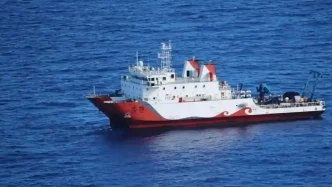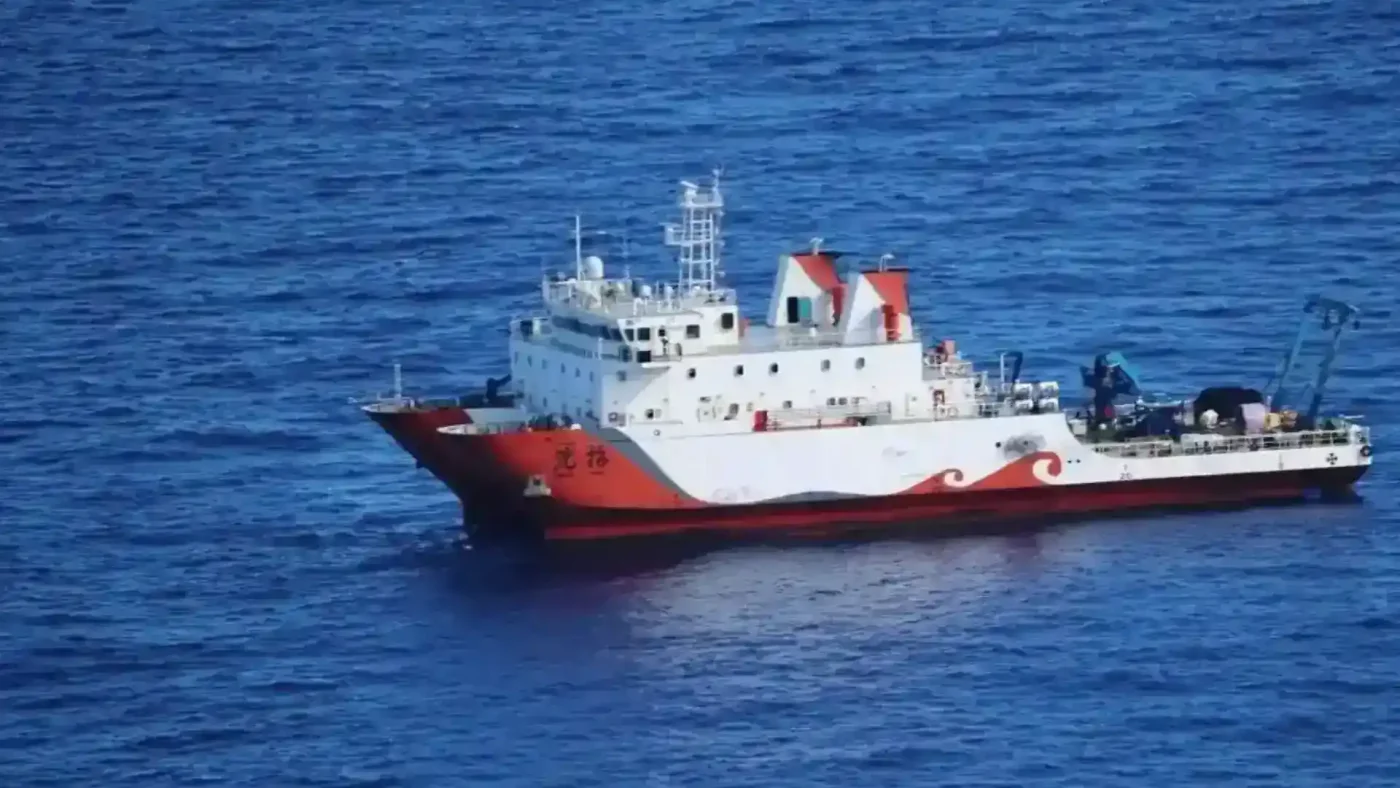Philippine President Ferdinand R. Marcos Jr. has called for a comprehensive investigation into dredging and reclamation activities in the country’s waters, following reports that sand from coastal areas is being used in China’s expansive projects in the disputed West Philippine Sea. The directive, announced by Malacañang on May 8, 2025, comes amid growing concerns over environmental destruction and potential geopolitical implications.
Investigation Underway Following Intelligence Reports
The Presidential Communications Office confirmed that the investigation was prompted by information received from the National Intelligence Coordinating Agency (NICA), which suggested that sand extracted from Philippine coastal regions was contributing to China’s reclamation efforts in the contested maritime area. Often referred to as the South China Sea internationally, the West Philippine Sea is a flashpoint for territorial disputes involving China, the Philippines, and several other Southeast Asian nations.
“After receiving information about this, the President ordered a thorough investigation into the matter. And now the investigation is ongoing” said Presidential Communications Office Undersecretary Claire Castro during a press briefing. She added that immediate action would follow once conclusive findings are reached, emphasizing that any orders would align with the investigation’s results.
The probe aims to determine the extent of these activities and whether local government units (LGUs) or other entities bear responsibility for permitting or overlooking quarrying operations in coastal zones. “That is why this will be investigated if there is someone who should be held accountable. This is also the President’s order” Castro stated, underscoring a commitment to accountability.
Chinese-Led Dredging Sparks Environmental and Economic Alarm
Reports of dredging operations, particularly those led by Chinese companies, have raised significant alarm across multiple regions of the Philippines. In Cagayan province, located in the northern part of Luzon, large-scale dredging along the Cagayan River has drawn sharp criticism from environmental groups and local fishing communities. These stakeholders argue that the activities have inflicted severe ecological damage, depleting fish stocks and causing economic hardship for small-scale fisherfolk in areas like Aparri and adjacent coastal towns.
Similar operations have been reported on Mindoro Island, with dredging projects underway off the shores of Gloria in Oriental Mindoro, as well as in Mamburao and Rizal in Occidental Mindoro. Local officials have defended these initiatives as measures for flood control and desiltation, aimed at mitigating natural disasters in vulnerable areas. However, the broader context of these projects—especially in light of NICA’s findings—has fueled skepticism about their true purpose.
Adding to the controversy, the capsized Chinese sand carrier MV Hong Hai 16 was photographed lying belly up in the waters off Rizal town, Occidental Mindoro, on April 15, 2025. While the cause of the incident remains unclear, it has drawn public attention to the scale and risks of dredging operations in Philippine waters.
Geopolitical Tensions in the West Philippine Sea
The West Philippine Sea remains a critical geopolitical arena, with China asserting expansive claims over much of the region through its controversial “nine-dash line,” a demarcation rejected by an international tribunal in 2016. The Philippines, backed by the landmark ruling at The Hague, continues to assert its sovereign rights over portions of the sea, including areas within its 200-nautical-mile exclusive economic zone (EEZ).
China’s reclamation activities, which involve building artificial islands often equipped with military infrastructure, have heightened tensions with neighboring countries. If confirmed, the use of Philippine sand in these projects could represent not only an environmental violation but also a direct challenge to national sovereignty. Analysts suggest that such actions, if proven, may complicate diplomatic relations between Manila and Beijing, already strained by frequent maritime confrontations involving fishing vessels and coast guard ships.
The Philippine government has yet to release detailed findings on the involvement of specific Chinese companies or the complicity of local actors. However, the ongoing investigation by NICA, which includes scrutiny of reclamation and dredging in areas like Manila Bay, signals a broader effort to address potential breaches of national security and environmental regulations.
Environmental and Community Impacts Under Scrutiny
Beyond geopolitical concerns, the environmental toll of dredging operations has become a focal point for activists and affected communities. In Cagayan, the removal of vast quantities of sand and sediment from riverbeds and coastal areas is said to have disrupted marine ecosystems, reducing fish populations that local communities rely on for their livelihoods. Fisherfolk in Aparri have reported significant declines in their daily catch, attributing the losses to habitat destruction caused by dredging equipment.
Environmental groups have also warned of long-term consequences, including increased vulnerability to flooding and erosion in areas where natural barriers like sandbars have been removed. “These operations are stripping away the very resources that protect our coasts and sustain our people” said a representative from a local advocacy group, speaking on condition of anonymity due to the sensitivity of the issue.
On Mindoro Island, while local officials maintain that dredging serves practical purposes such as flood mitigation, residents have expressed doubts about the transparency of these projects. Some speculate that economic incentives or external pressures may be driving approvals for operations that disproportionately benefit foreign entities over local communities.
Political and Legal Ramifications
The investigation ordered by President Marcos Jr. could have far-reaching political implications, particularly if it uncovers negligence or corruption among LGUs or national agencies tasked with regulating coastal activities. Calls for accountability have already emerged from various quarters, including opposition lawmakers. Members of the Makabayan bloc in the House of Representatives have urged a separate congressional probe into Chinese-led dredging in Cagayan, arguing that the issue warrants urgent legislative oversight.
Legally, the Philippines faces the challenge of enforcing environmental and maritime laws in the face of complex international dynamics. Under domestic legislation, unauthorized quarrying and reclamation activities can result in hefty fines and criminal charges. However, prosecuting foreign companies or addressing cross-border resource extraction poses significant hurdles, often requiring diplomatic negotiations or international arbitration.
The government’s response will also be closely watched by civil society and international observers, who see the handling of this issue as a test of Manila’s commitment to safeguarding its natural resources and territorial integrity. If the investigation yields evidence of misconduct, it may prompt stricter regulations on dredging permits and enhanced monitoring of foreign involvement in such projects.
Public Sentiment and Regional Context
Public sentiment, as reflected in social media discussions and community feedback, reveals a mix of frustration and concern over the dredging controversy. Many Filipinos view the potential export of sand to China’s reclamation projects as a betrayal of national interests, with some calling for stronger government action to halt such activities. Others worry about the economic fallout for coastal towns already grappling with the impacts of environmental degradation.
Regionally, the issue resonates with broader anxieties about China’s growing influence in Southeast Asia. Neighboring countries like Vietnam and Malaysia have also raised objections to China’s activities in the South China Sea, often citing environmental damage as a shared concern. The Philippines’ investigation could set a precedent for how smaller nations address resource exploitation tied to larger geopolitical agendas.
As the probe unfolds, questions linger about the balance between environmental protection, economic needs, and national security. For now, President Marcos Jr.’s administration faces the delicate task of navigating these competing priorities while responding to both domestic and international pressures. The outcome of this investigation may well shape the Philippines’ stance on maritime disputes and resource management for years to come.
















